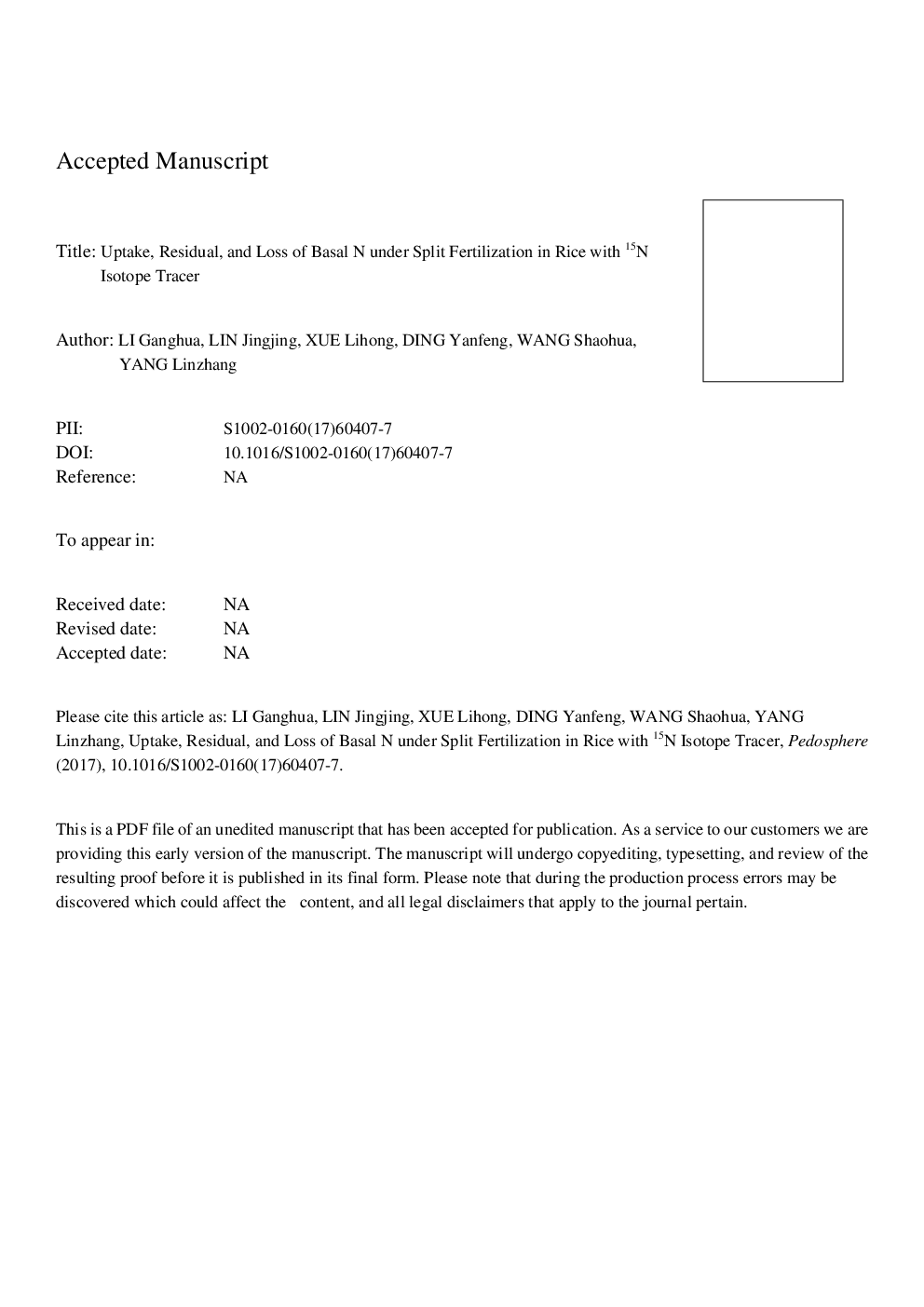| کد مقاله | کد نشریه | سال انتشار | مقاله انگلیسی | نسخه تمام متن |
|---|---|---|---|---|
| 8895410 | 1630322 | 2018 | 15 صفحه PDF | دانلود رایگان |
عنوان انگلیسی مقاله ISI
Fate of Basal N Under Split Fertilization in Rice with 15N Isotope Tracer
دانلود مقاله + سفارش ترجمه
دانلود مقاله ISI انگلیسی
رایگان برای ایرانیان
کلمات کلیدی
موضوعات مرتبط
علوم زیستی و بیوفناوری
علوم کشاورزی و بیولوژیک
دانش خاک شناسی
پیش نمایش صفحه اول مقاله

چکیده انگلیسی
Split fertilization strategy is popularly adopted in rice to synchronize soil nitrogen (N) supply and crop N demand. Attention has been paid more on mid-season topdressing N, but limited on basal N. A clearer understanding of the basal N fate under split fertilization is crucial for determining rational basal N split ratio to improve the yield and reduce the loss to environment. A two-year field experiment with two N rates of 150 and 300 kg N haâ1, two split ratios of basal N, 40% and 25%, and two rice varieties, Wuyunjing 23 (japonica) and Y-liangyou 2 (super hybrid indica), was conducted. Labelled 15N urea was supplied in micro-plots as basal fertilizer to determine the plant uptake, translocation, soil residual, and loss of basal N fertilizer. The results showed that basal N absorbed by rice was only 1.6%-11.5% before tillering fertilization (8-10 d after transplanting), 6.5%-21.4% from tillering fertilization to panicle fertilization, and little (0.1%-4.4%) after panicle fertilization. The recovery efficiency of basal N for the entire rice growth stage was low and ranged from 18.7% to 24.8%, not significantly affected by cultivars or N treatments. Soil residual basal N accounted for 10.3%-36.4% and decreased with increasing total N rate and basal N ratio, regardless of variety and year. 43.8%-70.4% of basal N was lost into the environment based on the N balance. Basal N loss was significantly linearly positive related with the basal N rate and obviously enhanced by the increasing basal N ratio for both varieties in both 2012 and 2013. The N use efficiency and yield was significantly improved when decreasing the basal N ratio from 40% to 25%. The results indicated that the basal N ratio should be reduced, especially with limited N inputs, to improve the yield and reduce the N loss to the environment.
ناشر
Database: Elsevier - ScienceDirect (ساینس دایرکت)
Journal: Pedosphere - Volume 28, Issue 1, February 2018, Pages 135-143
Journal: Pedosphere - Volume 28, Issue 1, February 2018, Pages 135-143
نویسندگان
Ganghua LI, Jingjing LIN, Lihong XUE, Yanfeng DING, Shaohua WANG, Linzhang YANG,